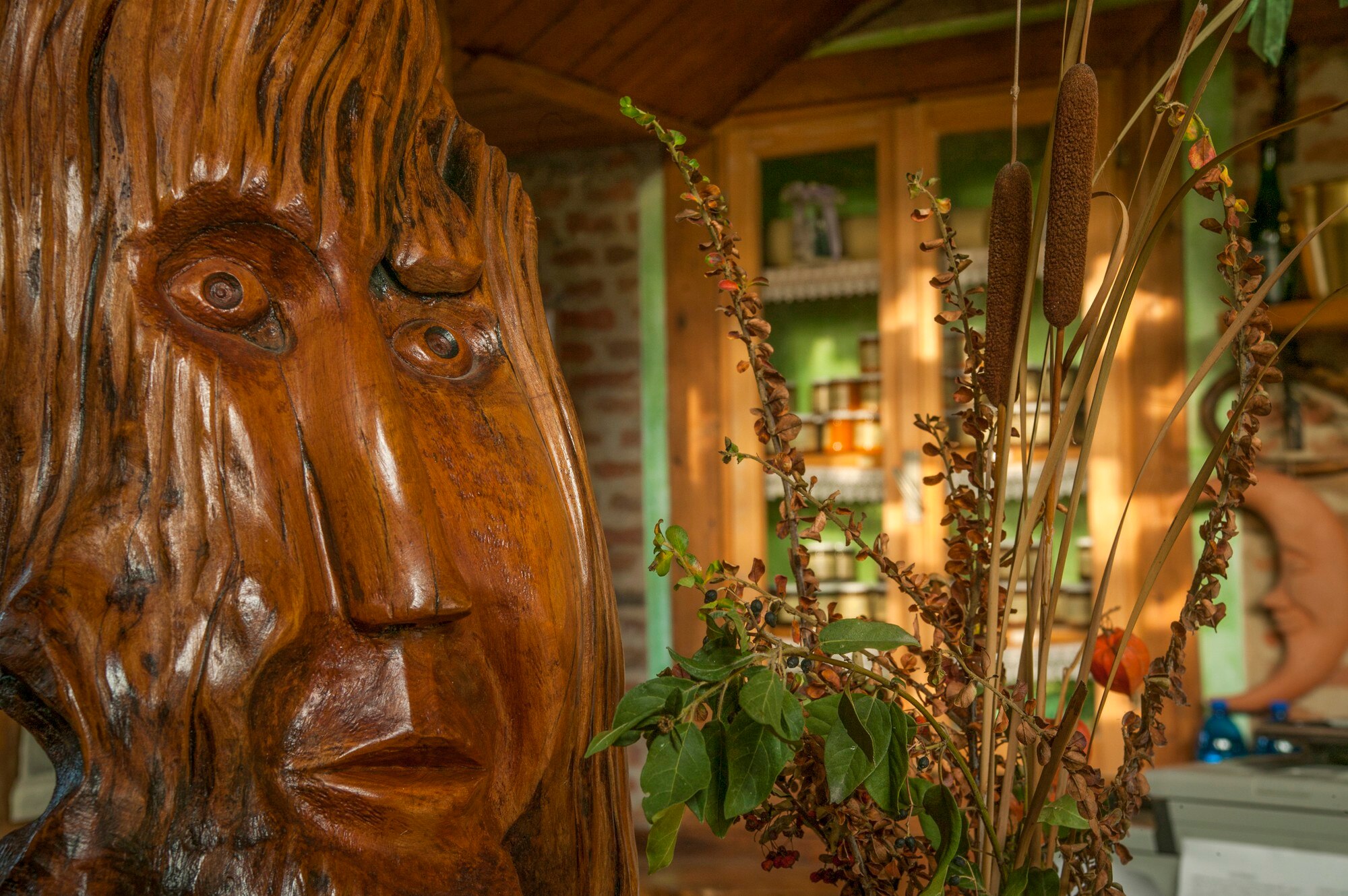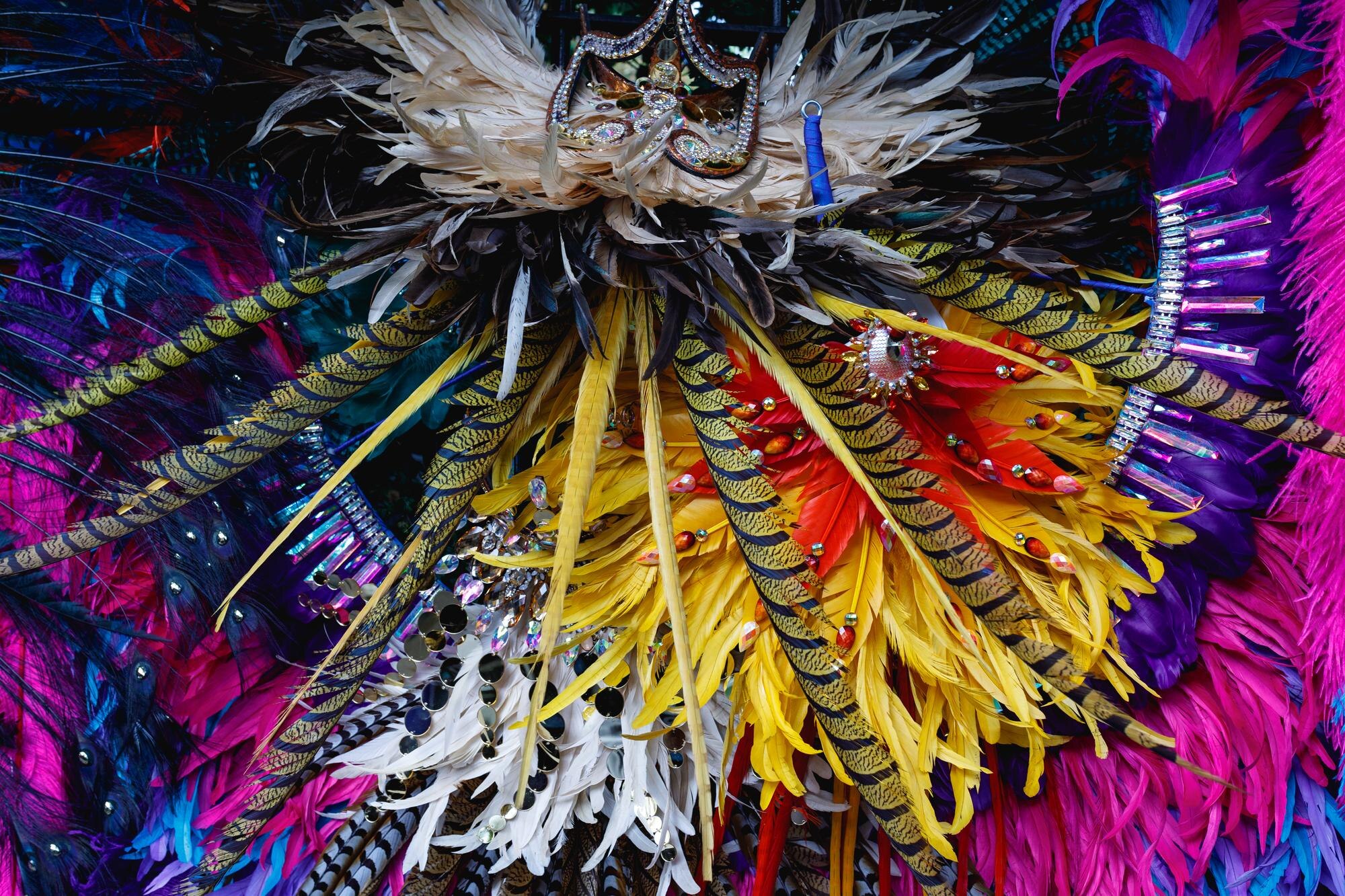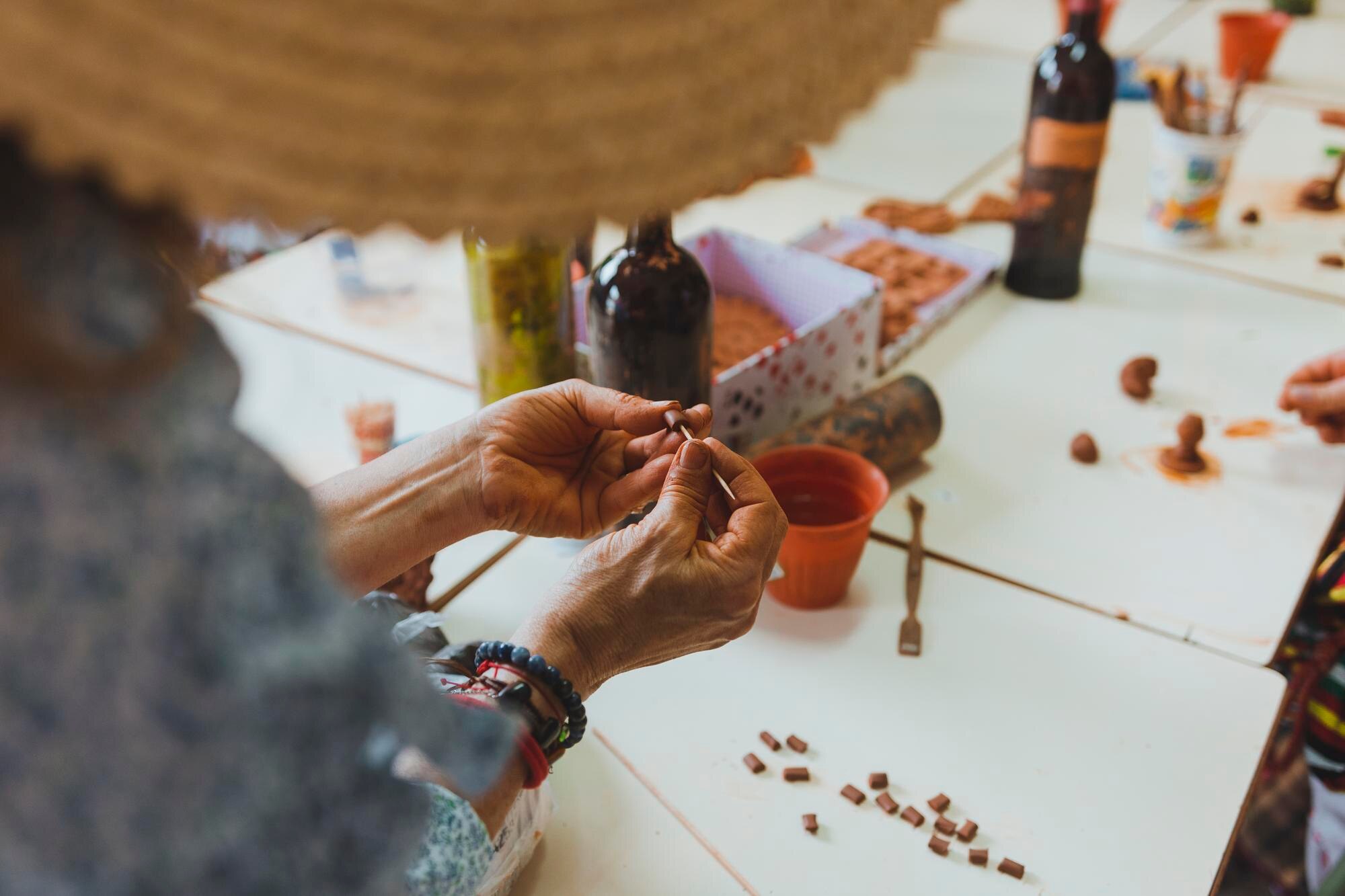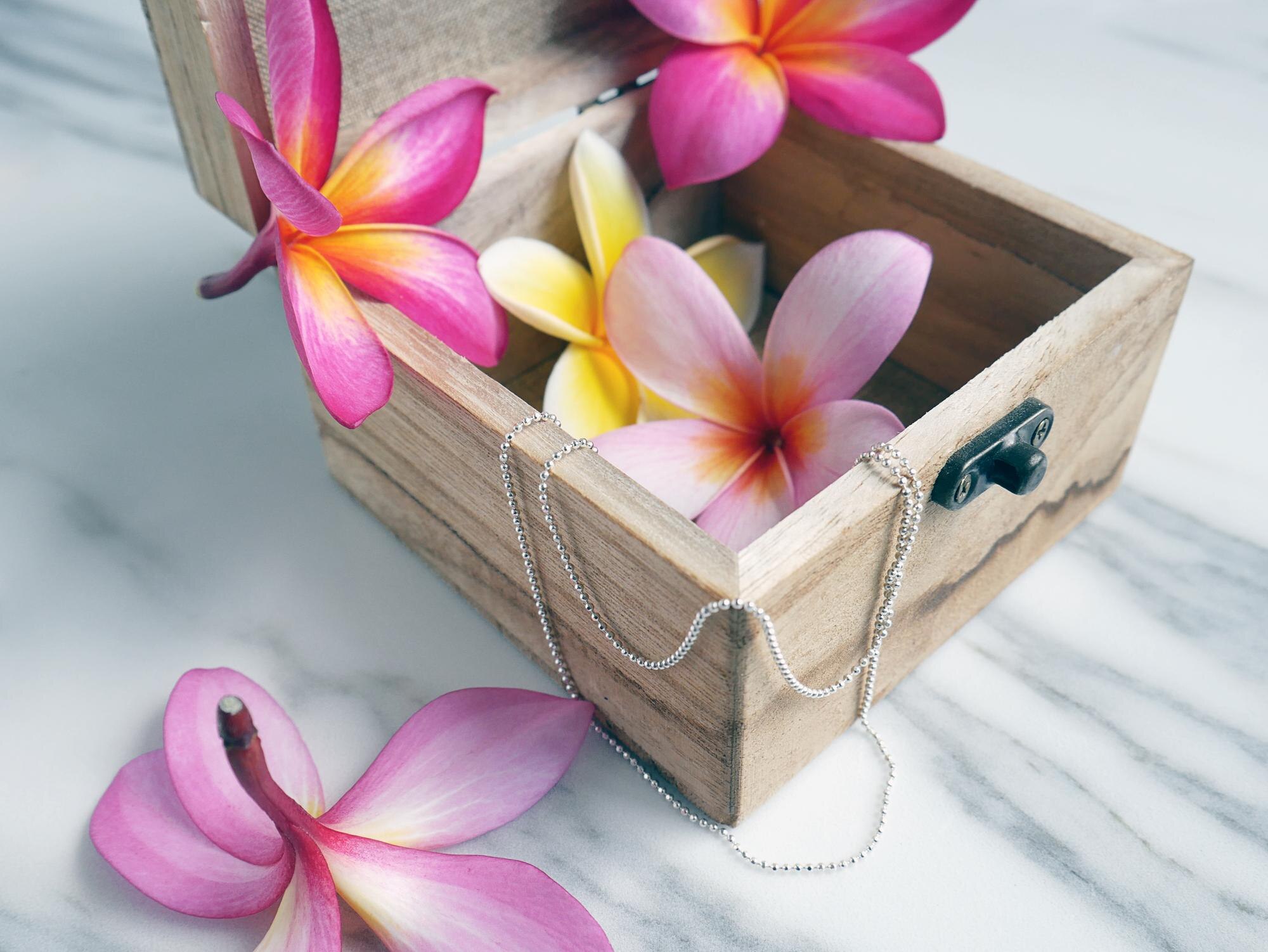Traditional Hawaiian Artifacts: Capturing the Spirit of the Islands
Hawaii's rich cultural tapestry is woven with the vibrant threads of its traditional crafts and artifacts, each piece echoing the spirit of the islands. From the intricate patterns of kapa cloth to the masterful carvings of ancient wood sculptures,
Hawaiian art forms tell stories of history, nature, and the people who have called these islands home for centuries. As you wander through bustling craft workshops in Hawaii, you'll be captivated by the cultural significance of Hawaiian art and the skilled hands that bring these time-honored traditions to life. Whether you're an art lover, a curious traveler, or someone with a deep appreciation for cultural preservation, exploring traditional Hawaiian artifacts offers a chance to connect with the islands in a truly meaningful way. So grab your lei and get ready to explore the beauty and artistry that make Hawaii a uniquely enchanting destination.
The Art of Hawaiian Weaving
Hawaiian weaving is an age-old tradition that captures the essence of the islands through its intricate designs and cultural importance. Weaving in Hawaii is more than just a craft; it's a connection to ancestral wisdom and natural resources. The weaving techniques have been passed down through generations, with each piece carrying stories of the past. Let's explore the unique aspects of Hawaiian weaving that make it a cherished tradition.
Techniques and Tools
Hawaiian weaving relies on traditional techniques that emphasize skill and patience. Fibers from native plants, such as the hala tree, are meticulously prepared and woven into patterns. Tools like wooden beaters and bone needles are essential for crafting these intricate designs.
- Harvesting: Plant fibers are gathered with care to preserve their quality.
- Preparation: The fibers are cleaned and softened, readying them for use.
- Weaving: Using traditional methods, artisans create patterns that tell stories.
Real-world examples show weavers in craft workshops dedicated to preserving these skills, ensuring the art form thrives for future generations.
Cultural Significance of Hawaiian Art
Hawaiian art holds immense cultural significance, acting as a bridge between the past and present. Weaving, in particular, plays a critical role in expressing the identity and values of the Hawaiian people. It symbolizes community and connection to nature.
- Storytelling: Weaving patterns often depict historical events or legends.
- Spirituality: Many designs hold spiritual meanings, invoking blessings.
- Identity: Art pieces reflect the unique Hawaiian identity and heritage.
The Cultural Craft Oni Foundation showcases the importance of preserving these traditions through community engagement.
Famous Weaving Artifacts
Some weaving artifacts have gained fame for their craftsmanship and historical value. These pieces are celebrated in museums and collections worldwide, showcasing the richness of Hawaiian artistry.
- Feather capes: These were symbols of power and prestige among Hawaiian royalty.
- Mats: Utilitarian yet beautiful, they serve both practical and ceremonial purposes.
- Garments: Traditional clothing pieces demonstrate the versatility of weaving.
Displays in local museums highlight these artifacts, offering a glimpse into Hawaii's vibrant art history.
Carving Traditions of Hawaii
 Carving is another essential Hawaiian art form that represents the deep connection between the people and their environment. From majestic canoes to delicate petroglyphs, Hawaiian carving reflects both functionality and artistic expression.
Carving is another essential Hawaiian art form that represents the deep connection between the people and their environment. From majestic canoes to delicate petroglyphs, Hawaiian carving reflects both functionality and artistic expression.
Hawaiian Canoe Craftsmanship
The art of canoe building is a revered tradition in Hawaii. Hawaiian canoes are not just vessels; they are a testament to the ingenuity and skill of the Hawaiian people. The process of crafting a canoe involves meticulous attention to detail.
- Selecting wood: Traditionally, koa wood is chosen for its strength and durability.
- Shaping the hull: Carvers use adzes to sculpt the canoe's shape.
- Finishing: The canoe is sanded and oiled, ready for the sea.
Canoes are often celebrated in Hawaii art tours that highlight their cultural and historical significance.
Intricate Petroglyphs
Petroglyphs are ancient carvings found on rocks throughout Hawaii. These carvings serve as historical records, capturing moments from daily life and significant events.
- Designs: Simple yet profound, depicting humans, animals, and symbols.
- Locations: Found in sacred places, often near the coast or in caves.
- Purpose: Believed to be maps, records, or spiritual symbols.
Exploring these petroglyphs offers insights into the lives of Hawaii's early inhabitants and their relationship with the land.
Craft Workshops in Hawaii
For those interested in learning more about Hawaiian carving, various craft workshops offer hands-on experiences. Participants can learn traditional techniques from skilled artisans, gaining a deeper appreciation for the craft.
- Interactive learning: Workshops provide opportunities to try carving firsthand.
- Cultural immersion: Participants learn about the historical context of the art form.
- Community engagement: Workshops foster connections among locals and visitors.
These workshops are vital in passing down knowledge and keeping the carving traditions alive.
The Beauty of Hawaiian Featherwork
 Featherwork is a distinctive Hawaiian art form celebrated for its vibrant colors and intricate designs. Feathers are used to create stunning garments and accessories that reflect the beauty and diversity of the islands.
Featherwork is a distinctive Hawaiian art form celebrated for its vibrant colors and intricate designs. Feathers are used to create stunning garments and accessories that reflect the beauty and diversity of the islands.
Unique Feather Capes
Feather capes, or 'ahu'ula', are iconic symbols of Hawaiian royalty. These capes are crafted with precision, each feather carefully chosen and placed to create a masterpiece.
- Materials: Feathers from native birds were traditionally used.
- Design: Patterns are often geometric, showcasing a range of colors.
- Symbolism: Capes represent power, status, and spiritual protection.
Museums and galleries often feature these capes, illustrating their historical and cultural importance.
Traditional Hawaiian Artifacts in Museums
Museums in Hawaii play a crucial role in preserving and showcasing traditional artifacts. They offer a window into the past, allowing visitors to appreciate the artistry and craftsmanship of Hawaiian artisans.
- Exhibitions: Displays of weaving, carving, and featherwork.
- Educational programs: Workshops and talks that delve into the history of Hawaiian art.
- Preservation efforts: Conservation techniques to maintain the condition of artifacts.
Visitors can immerse themselves in Hawaiian culture by exploring these rich collections.
Preserving Featherwork Techniques
Preservation of featherwork techniques is essential to maintaining the legacy of this unique art form. Efforts are being made to keep these skills alive and ensure they are passed down to future generations.
- Training programs: Initiatives to teach young artisans traditional methods.
- Community involvement: Encouraging local participation in preservation efforts.
- Documentation: Recording processes and patterns for future reference.
Organizations like the Cultural Craft Oni Foundation are at the forefront of these efforts, supporting artisans and promoting cultural heritage.
Pottery and Kapa Making
 Pottery and kapa making are integral to Hawaiian culture. These crafts demonstrate the resourcefulness and creativity of Hawaiian artisans, using natural materials to create functional and decorative items.
Pottery and kapa making are integral to Hawaiian culture. These crafts demonstrate the resourcefulness and creativity of Hawaiian artisans, using natural materials to create functional and decorative items.
Hawaiian Kapa Cloth Patterns
Kapa cloth is a traditional Hawaiian fabric made from the bark of the wauke tree. The process of making kapa involves several steps, each requiring skill and patience.
- Harvesting bark: The bark is stripped and soaked to soften it.
- Beating: Wooden tools are used to beat the bark into cloth.
- Dyeing and printing: Natural dyes create patterns, often with symbolic meanings.
Kapa cloth patterns are celebrated for their beauty and complexity, reflecting the artistry of Hawaiian craftsmen.
The Pottery Process
Hawaiian pottery involves shaping and firing clay to create utilitarian and ceremonial objects. This process highlights the practical and artistic aspects of Hawaiian culture.
- Clay preparation: Clay is sourced locally and prepared for use.
- Shaping: Pieces are hand-shaped, with forms influenced by traditional designs.
- Firing: Pottery is fired in open pits, a technique that results in unique textures.
Pottery is an important part of Hawaiian art, showcasing the skill and creativity of its makers.
Influence on Modern Hawaiian Crafts
Traditional crafts like kapa making and pottery continue to influence modern Hawaiian artisans. These crafts inspire contemporary artists to incorporate traditional elements into their work.
- Blending old and new: Modern artisans often combine traditional techniques with modern styles.
- Sustainable practices: Use of natural materials aligns with contemporary ecological values.
- Cultural revival: Emphasizing traditional crafts strengthens cultural identity.
Craft fairs and galleries, such as those highlighted by Hawaii art tours, showcase the evolution of Hawaiian crafts.
The Role of Hawaiian Jewelry
 Jewelry holds a special place in Hawaiian culture, symbolizing connection to the land and the sea. Hawaiian jewelry reflects the natural beauty of the islands and the artistry of its people.
Jewelry holds a special place in Hawaiian culture, symbolizing connection to the land and the sea. Hawaiian jewelry reflects the natural beauty of the islands and the artistry of its people.
Symbolism in Hawaiian Jewelry
Hawaiian jewelry often carries deep symbolism, with designs inspired by the natural world and cultural heritage. These pieces serve as expressions of identity and tradition.
- Nature motifs: Designs often feature elements like flowers and waves.
- Cultural symbols: Jewelry incorporates traditional Hawaiian symbols, such as the honu (turtle) and plumeria.
- Meaningful gifts: Pieces are often given as tokens of love and friendship.
Jewelry is a way for individuals to carry a piece of Hawaii with them, wherever they go.
Popular Hawaiian Art Forms in Jewelry
Hawaiian jewelry includes a variety of art forms, each showcasing the island's unique aesthetic. From simple shell pieces to elaborate gold creations, Hawaiian jewelry is both diverse and distinctive.
- Shell jewelry: Utilizing locally sourced shells for natural beauty.
- Gold and silver: Incorporating traditional motifs into precious metals.
- Pearl accents: Featuring Hawaiian black pearls for a touch of elegance.
Local artisans create stunning pieces that capture the essence of Hawaiian art.
Local Artisans and Their Creations
Local artisans play a vital role in keeping Hawaiian jewelry traditions alive. Their creations reflect the island's culture and the individuality of the artists.
- Personal stories: Each piece tells the story of its maker and their connection to Hawaii.
- Community support: Buying local supports artisans and the preservation of traditional crafts.
- Innovation: Artisans blend traditional techniques with modern designs to create unique pieces.
Exploring local jewelry shops offers a chance to connect with the artisans and appreciate the skill behind each creation.

